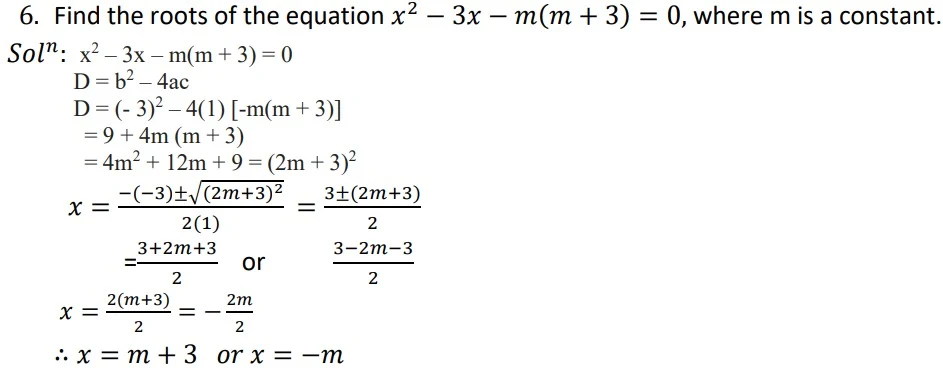Quadratic Polynomials
⇒ A polynomial of the form a x2 + bx + c, where a, b, and c are real numbers and a ≠ 0, is called a quadratic polynomial.
⇒ The degree of the polynomial is 2.
⇒ A quadratic polynomial of the form a x2 + bx + c, where a ≠ 0 and a, b, and c are real numbers, is called a quadratic equation.
i.e., a x2 + bx + c = 0
- a is the coefficient of x2
- b is the coefficient of x
- c is the constant term
Zero of a Quadratic Polynomial
⇒ A real number α is said to be a zero of quadratic polynomial p(x) = a x2 + bx + c if p(x) = 0.
Example: If p(x) = x2 + 6x + 5, then x = -5 is a zero of the polynomial because it satisfies p(x) = 0.
Root of a Quadratic Equation
⇒ The values of x for which a quadratic equation is satisfied are called the roots of the quadratic equation.
A quadratic equation can have:
- Two distinct real roots
- Two equal roots
- No real roots
Methods to Solve Quadratic Equations
⇒ There are three methods to solve quadratic equations:
- Factorisation Method (Splitting the Middle Term)
- Completing the Square Method
- Quadratic Formula Method (Sridharacharya Formula)
1. Factorisation Method
⇒ In this method, we factorise the quadratic equation into two linear factors and solve for the roots.
Steps:
- Factorise the equation using the splitting the middle term method.
- Set both factors equal to zero and solve for x.
Example:
For the quadratic equation x2 - 2x - 15 = 0:
x = -3 or x = 5
The roots are x = {-3, 5}.
2. Completing the Square Method
⇒ This method involves completing the square to solve the quadratic equation.
3. Quadratic Formula Method
Nature of Roots of Quadratic Equation
⇒ The discriminant D helps us determine the nature of the roots:







